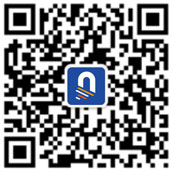Edited by PANews
About the author:Alexandre Kech, is the CEO of Onchain Custodian, former Head of Securities & FX, Asia Pacific at SWIFT. Headquartered in Singapore, backed by Fosun, DHVC and Sequoia Capital, Onchain Custodian (ONC) provides third-party custody service to institutional players and qualified investors.
The crypto and blockchain industry brings revolutionary promises for societal change. Many believe that the innovative technology will lead toweb 3.0 – an evolution of the current platform that allows for uncontested and transparent transfer of value between individuals and businesses without the need for unnecessary intermediaries.
This web 3.0 revolution will enable the unbanked to have access to financial products, the first of it being the simple right to transfer money at affordable rates. Through tokenization of shares on the blockchain and fragmented ownership, the tech could alsoopen access to investment products traditionally reserved for a selective niche – such asreal-estate, fine art, and private equity investments.
Other use cases around interchangeable utility access rights such as fidelity points and gaming prizes are also being worked on. In fact, this new way of managing assets and value could lead to financial products and services that we can’t even imagine yet.
The industry is still in its infancy and the technology still needs to mature. The regulatory unknowns still need to be responded to. Masses still need to be offered a solution where the fact it is run by blockchain and tokenization at the backend is invisible and, in fact, irrelevant to the users.
Perhaps the biggest challenge is the security concerns of holding digital assets. The ownership and access to crypto currencies and other altcoins fueling the blockchain ecosystem is defined by a combination of a public keys(similar to a bank account where you can receive money) and private keys (that can be compared to the password you use to access your bank account).
This pair of keys have characterized crypto assets on the blockchain and are an essential building block of the technology. In very simplified terms, these keys prove the uniqueness of an asset in the blockchain and its ownership. Without it, blockchain is just a distributed database.
The challenges is that if someone gets hold of these two, he holds the asset and you don't anymore. This is exactly what happens when a crypto exchange gets ‘hacked’. And when investors lose their keys, since there is no central authority managing blockchain, there is no one to reset passwords or restore access.
The solution is simple – independent third party custodians.

Security, Neutrality and Transparency
Third party custodians are independent, neutral institutions securing crypto holdings at the request of investors, often institutional players and qualified investors will large crypto positions. The emergence of third party digital asset custodians is relatively new, with the oldest firmshaving been around for only a couple of years. They fillone of the gaps that have prevented the crypto industry from becoming mainstream.
Third party custodians are dedicated to and focused on the cyber-secure hosting of crypto assets. This is their core business. They have dedicated all their resources, both financial and human, to protecting access to assets on the blockchain. Because security is a key focus, custodian’s solutions tend to be more secure than exchanges, funds or major corporations getting involved in crypto for the first time.
Third party custodians are neutral. They are appointed by their customers to perform custody without any link to another business activity such as trading or market-making. This prevents the potential conflict of interests that are ruining the crypto industry today.
How many exchanges are also offering custody, market making and OTC trading services? Where is the segregation of duty that is rightly prevalent in the traditional capital market industry? How many fund managers are also advisors, market makers, OTC brokers and planning to launch an exchange? How can their customers be certain that they are not privileging their advisory service customers on OTC trades over another customer only using them for trading? With no clarity of core business and dedication, this industry risks going into a wall.
Most custodians are dedicated to custody. They offer the clients equal access to the value-added service they offer and partners they work with. At leastat Onchain Custodian, neutrality and integrity is part of our DNA, asit should be for all players in our custody industry.
Code of conducts, standardization, and regulation
This is why Onchain Custodians and other serious industry players are collaborating to fill the integrity and regulatory gap through the creation of codes of conduct. Codes of conduct, such as the ones published by the Global Digital Finance (GDF), are designed toself-regulate the market and positively influence regulators looking at regulating our industry to ensure the rules are adapted to our industry and not blindly copy-pasted fromtoday's banking and capital market regulatory frameworks.
Standardization is also being looked at around technology, i.e., how APIs bringing access to custodians can be similar regardless of the provider. Should Securities Token Offerings (STOs) and the smart contracts powering them be so different from blockchain to blockchain or platforms to platforms? There is certainly room for harmonization and it is important thatcustodians also participate in the effort. This is what we do at Onchain Custodian, through our participation in GDF (I am co-chairing the custody working group), ISO and other working groups.
On the other hand, digital custody solutions have been relatively untouched by regulators so far. Some countries like Japan and Indonesia have taken positions requiring the use of a third-party custodian for exchanges and asset managers, but this often falls back on the existing custody framework which isn’t necessarily suited to the crypto space and the nature of digital assets.
Obtaining clarity from each jurisdiction on their regulatory stance is crucial for third-party custodians in planning their business growth and coverage. Singapore is currently a very welcoming environment for crypto companies, preferring to take a wait-and-see approach to cryptocurrencies and utility tokens, leaving them unregulated right now, and meaning licenses are not required for custody. The Monetary Authority of Singapore (MAS) has also taken a clear stance on security tokens, indicating they would fall under the Securities & Futures Act, meaning a Capital Market Service Licence is required for custody.
Third-party custodians are there to provide their customers with peace of mind in the safekeeping of their digital assets. We offer single window access to different blockchain token protocols and to different partner services such a lending and OTC trading. We mitigate the risk of leaving crypto assets at exchanges. We alleviate the operational and technological burden and cost of self-custody for all players. We are here to serve and help you with the complex management of private keys. We are here to bring security, trust and transparency to the whole ecosystem.












